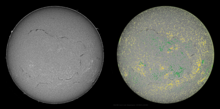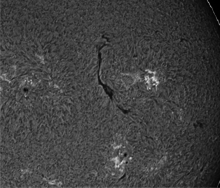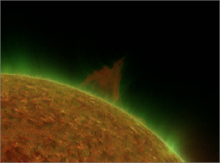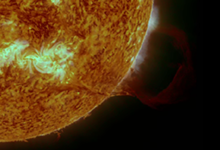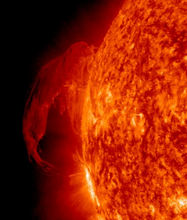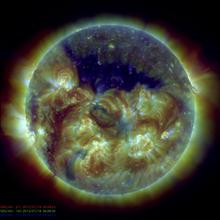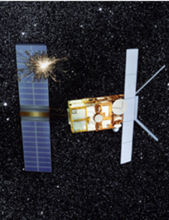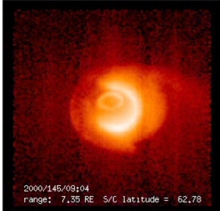news
Submitted on 2013-09-19
A quite impressive filament eruption took place on the Sun's backside on 11 September (see this movie). Solar filaments are clouds of ionized gas above the solar surface squeezed between magnetic regions of opposite polarity. Being cooler and denser than the plasma underneath and their surroundings, they appear as dark lines when seen on the solar disk using special filters.

Submitted on 2013-09-12
Solar filaments are clouds of ionized gas above the solar surface squeezed between magnetic regions of opposite polarity. Being cooler and denser than the plasma underneath and their surroundings, they appear as dark lines when seen on the solar disk using special filters, such as Hydrogen-alpha that shows the "cold" inner atmosphere of the Sun ("chromosphere").
Submitted on 2013-07-31
The month of July saw some really great prominence activity. Prominences are relatively cool and dense structures reaching all the way up into the Sun's hot outer atmosphere. This movie shows nine events picked from a long list.

Submitted on 2013-07-18
Most often, people think about high energetic protons, space debris and altitude loss from an expanding atmosphere as the most important threats to the survival of earth-orbiting satellites. However, also the abundantly present electrons can constitute a lethal danger to the satellite's life. Many satellites such as Telstar 401 and Galaxy IV did not recover from electron induced effects, so two of them will be sketched here.
Submitted on 2013-07-11
The plasmasphere is a region of "cold" (low-energetic) particles that extends from about 1600 km to over 30000 km above Earth's surface. It is an extension of the ionosphere, and overlaps the inner Van Allen radiation belt and a good part of the outer one. The difference between the plasmasphere and the Van Allen belts is that the latter contain "hot" (high-energetic) particles that behave according to a whole different set of rules.

Pages
Zircon - This is a contributing Drupal Theme
Design by
WeebPal.


